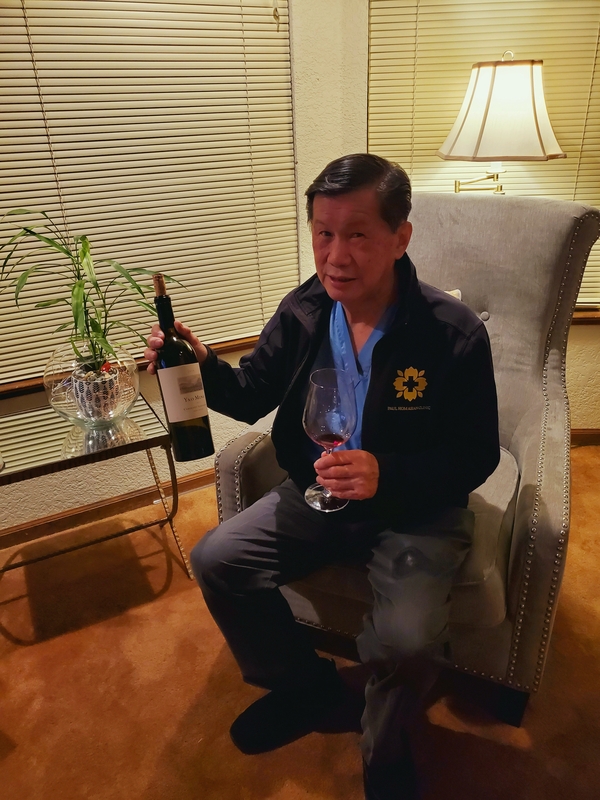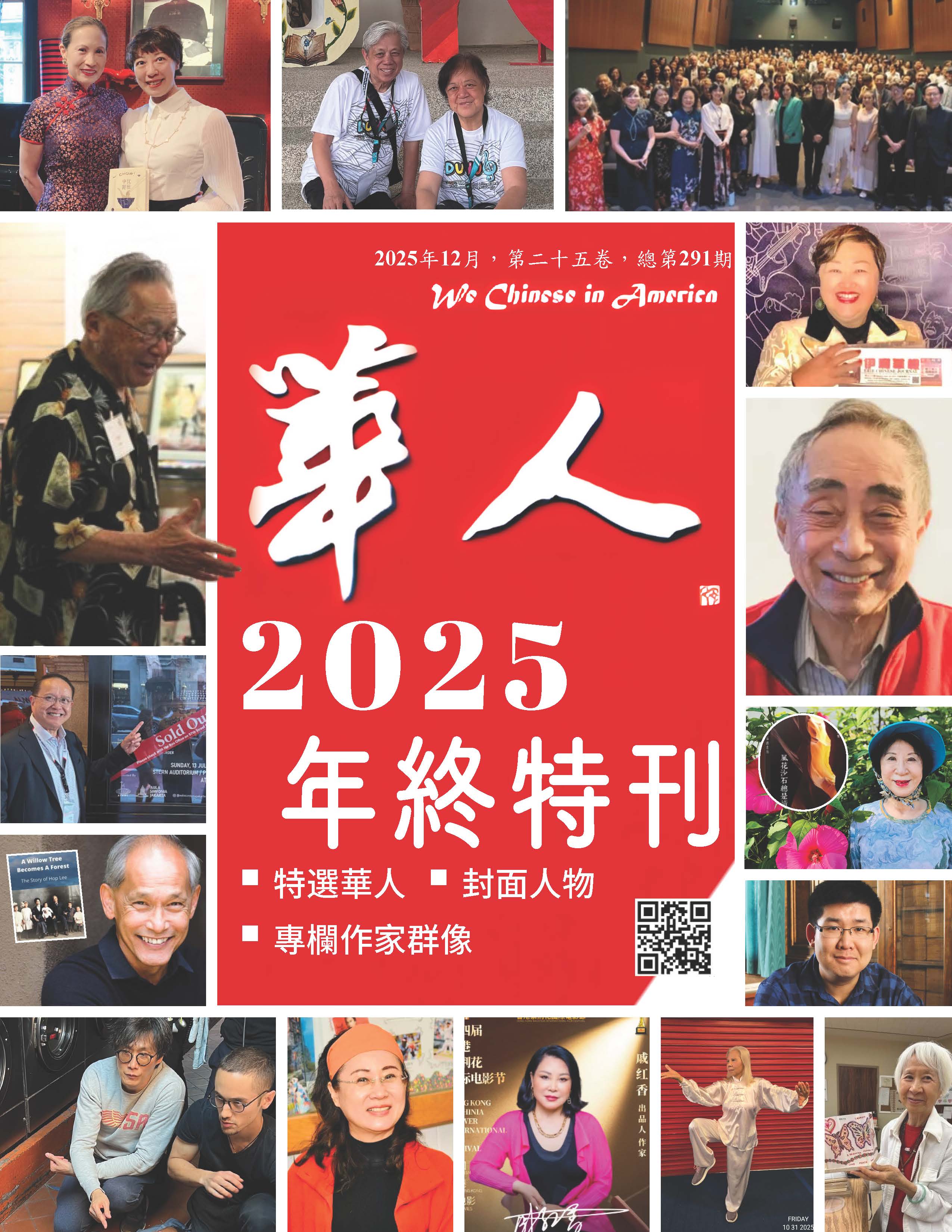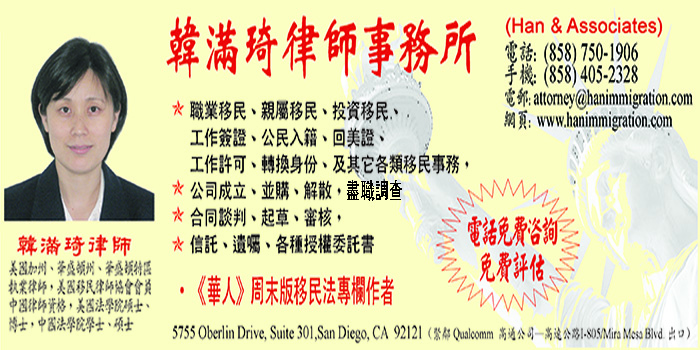
Dr. Ronald Jan and His Wine Tasting Journey & Certificate
(We Chinese in America Media Editor Tang Zhao, December 18, 2021) The cover story of the December 2021 issue of "We Chinese in America" was an interview with Dr. Ronald Jan. Dr. Jan is not only a successful surgeon, but he also has many hobbies. His past experiences in sports included track, cross country, and judo. He also studied piano for 7 years and trombone for 5 years and sang with the Sacramento Symphony Chorus for 14 years. In addition, he has a fondness for wine tasting and food pairing. Recently he passed with merit WSET level 3 test. In the cover story, due to the space, there was no in-depth report on Dr. Jan’s wine tasting and food pairing hobby. We are pleased that we had an opportunity to interview Dr. Jan specifically regarding his wine tasting and food pairing hobby.
Dr. Ronald Jan and His Wine Tasting Journey & Certificate
Reporter: Dr. Jan: Congratulations on being awarded a WSET Level 3 Certificate. Please help us understand what this Certificate is about, what kind of qualifications are required to receive this certificate, and what it means to you, a person who is very interested and engaging in a wide range of research on wine tasting?
Dr. Jan: WSET = Wine and Spirits Education Trust is an internationally recognized organization formed in 1969 to further the knowledge of wine and spirits. Based out of London this prestigious organization began education of both wines and spirits. Its curriculum has evolved to a point where it offers 3 separate tracts -
Wine in 4 levels
Spirits in 3 levels
Sake in 2 levels.
WSET exams are taken after completing each of the courses at each of the different levels.
For example, for wines the WSET 3 wine exam has 2 main parts: 1. The cognitive factual and understanding of wines - grape growing and wine making all over the world and 2. Tasting and evaluating red and white wines.
The WSET 3 for wines (Wine level 3) course seeks to answer the question, “What are the factors that determine the style and quality of the wine in my glass (no matter what wine I encounter)?” So that, I will be able to explain to friends, customers or colleagues why the wines that they love taste the way they do. And so, a person who has passed the WSET level 3 exam on wines should understand how the grapes are grown, how the wines are made and why the wines taste the way they do. WSET 3 certification places a person into a position (should he/she wish) to take the final step in becoming a specialist in wines which is especially useful for those choosing a career in viticulture, viniculture, or marketing / serving wines.
The WSET 3 course was excellent. Studying about the wines of the world - growing of grapes in various climates, terrain, ocean currents and soil conditions as well as making the wines - decisions made at each step led me to understanding better world geography (with side adventures into history) along with reflections back to some of the basic science (botany, chemistry, microbiology, etc.) For me, the WSET course was a wonderful journey and now has allowed me to combine my interest in Wine with my interest in Chinese History and Art by studying Wines of China (production as well as consumption) along with the pairing of grape wines with Asian foods. For me, the certificate gives to me a degree of credibility in my sincere interest in wines beyond a superficial level.
Reporter: Please share with us how you taste wines? Could You please recommend a few good/famous wines from California? Why would you recommend these wines?
Dr. Jan: For me, tasting wines will be influenced by the particular setting…If I am just enjoying the evening with friends, I may just give a rather hasty almost passing thought about the color, the aroma, the taste and the after-taste (or finish) of the wine….and then, just enjoy the wine with friends. If I am to more critically evaluate a wine then…I may take more time to assess each of those elements in more detail and then conclude whether the wine is outstanding, very good, good, acceptable or not acceptable….and whether or not I believe that the wine should be drunk now, or can be drunk now but will age well in the bottle, or beyond its peak but still acceptable….and whether I think that it truly represents the grape cultivar, the region, the vintage and the intended style of the winemaker.
There are countless number of wineries in California, and I have certainly not tried all of them…. there are many excellent wines that I am certain to exclude unintentionally. And as is true of any list, the list becomes a list of exclusion.
Disclaimer: In the spirit of complete transparency, I have been a member of the Yao (Ming) Family Wine Club since it began.
All selections are medium priced and are just a few of my favorite wines…
1. For Cabernet Sauvignon: Beringer Wines (Knights Valley Vineyard Reserve) or Yao Family Wines (Howell Mountain Vineyard Reserve)
With excellent structure these wines present pronounced aromas of black cherries and blackberries well balanced with a nice finish pairing well with Ribeye or New York Steaks. The Yao Family Wine may be a bit closed at first but opens nicely after about an hour.
2. For Zinfandel / Primitivo: Due Vigne di Familia Wines Primitivo or Todd Taylor Wines (Blue House Vineyard Reserve Primitivo)
With aromas of blackberries and raisin these wines pair well with BBQ meats with enough acid to cut nicely through the oils.
3. For Pinot Noir: Peay Wines (Scallop Shelf Estate Vineyard) or Fess Parker Wines (Pommard Clone)
Lighter color with more delicate aromas and flavors this wine’s higher acids and softer tannins makes it an ideal pairing with chicken or duck. The Pommard clone of Fess Parker adds a bit of complexity which will blend with more pronounced flavors.
4. For Riesling: 3 Wine Company Wines or Kung Fu Girl Wines (Washington State)
Wonderful floral aromas with perfect balance of acids make these wines perhaps the most balanced wine to pair with almost any Chinese dish. The acids lend a bit of freshness to the entire experience and without being syrup sweet these Rieslings display nice fruit of citrus and young peaches.
5. For Sauvignon Blanc: Twomey Wines or Kenzo Wines
Both of these wines are well-balanced with acids to lend a very fresh citrus fruit element with an element of fresh herbs. All this will complement well with foods of delicate flavors often seen in seafoods.
6. For Chardonnay: Rombauer Wines or Newton Wines
Both of these wines are from a warmer climate and display elements of more full body and lighter acidity. Both display elements of softening by malo-lactic acid fermentation and ageing in oak with a buttery smoothness and hints of tropical fruit such as lichee. With the buttery smoothness Chardonnays pair well with rich, creamy dishes such as butter chicken, seared scallops or lobster / crab with butter.
7. For Dessert Wines: Jeff Runquist Wines Muscat Canelli
With wonderful floral aromas with elements of ripe peaches and pears the Runquist Muscat may present with a very slight amount of sparkling spritz giving a freshness to the wine often welcomed at the end of a meal with a fresh dessert such as a mango cake.
8. For Sparkling Wines: Yao Family Winery
With good acidity and small lasting bubbles this sparkling wine awakens the taste buds and brings freshness to almost any Asian food.
Reporter: I learned that you have also been engaged in wine and food pairing. Could you please help us understand wine and food pairing, specifically how to select wines and food to pair them.
Dr. Jan: I do like many different wines…and I select the wine to match the food, the mood, and the company. And I ask, “What does each wine bring to the occasion?” (Just as one might ask, “What does each instrument bring to the symphony?”)
Of course, there are several general principles about wine and food pairings
Wine and Food Pairing
Just as the Chinese believe in the
balance of Yin and Yang,
so also is the pairing of
good food balanced with good wine.
It is important to realize that in general one should drink the wine that one likes with the food that one likes. No food is going to make the wine that you like turn into the taste of dirty dishwater. And no wine that you like will turn the food into garbage. And so, drink the wine that you like with the food that you like. Having said that there are certain elements in the food that can influence the taste of the wine and vice versa. And so, it is of value to know how the food was prepared (with what ingredients) in order to pair with certain wines which may have greater or lesser amounts of acid / sourness, bitterness / tannin, sweetness, saltiness, savoriness / umami (e.g., MonoSodium Glutamate—MSG), and alcohol along with certain other flavors & aromas. etc. Of course, these perceptions of different flavors / aromas will differ with each individual’s sensitivity to such flavors (related to the number of taste buds and the number of olfactory nerves with which we are born) as well as to the individual’s preference part of which can be influenced by many social factors.
The foods of China (and Asia, in general) did not evolve with grape wines as it did in Europe. As such, pairing grape wine with Asian foods presents challenges. There are additional challenges in pairing wines with Asian foods because in a single dish there may be multiple aromas / flavors which will challenge the wine lover to choose which wine to pair with the dish….and to make things even more complex in Asian cuisine the dishes are often shared family style and often different dishes are brought out at the same time….challenging the wine lover to choose the wine(s) that will best pair.
One possible solution is to bring the food out in groups that will likely share some of the same elements that would pair well with a specific wine…then, a second wave of foods that will pair well with a different wine…Alternatively, the better idea may be to simply open two bottles of wine from the very beginning and simply leave it to the guests as to their preference in wine and food pairing.
Reporter: I have the understanding that you have researched extensively on Lung Dai produced in Shan Dong Province. Could you please briefly introduce Lung Dai?
Dr. Jan: Domaines Barons de Rothschild (Chateau Lafite) selected and planted grapes in the Qiu Shan Valley of Shandong Province noting the excellent conditions for growing Bordeaux style wines using Cabernet Sauvignon, Cabernet Franc and Marselan grapes. The Maritime Climate was good [warmed by 37.6 degrees North Latitude, the warm Japan current into the Yellow Sea and the Gulf of Bohai and the Taihang and TaiShan Mountains shielding Shandong from the fiercely cold Siberian winds from the North in the winter] … all contributing to a long growing season. The soils are granite which affords suitable drainage for the Cabernet -based grapes. Still, Domaines Barons de Rothschild patiently studied the soils, terrain and farming techniques taught by local farmers in Qiu Shan Valley for 10 years before producing the first wine. This illustrated the importance in maximizing condition and methods of growing grapes and then combining these wonderful grapes with the proven winemaking skills of Chateau Lafite Rothschild.
The result: Long Dai Wine
With a $650 price tag I have not had the chance to taste this wine but here are some of the comments given by others…
James Suckling:
full bodied, extremely soft and velvety with reserved and refined character at the finish (with minerally undertones). (The wine is) succulent and long with a juicy finish. (And although the wine is) already very drinkable but (will be) better in 2022.
Decanter:
The Marselan (grape) seems a very smart addition to this wine, giving gentle flesh and soft tannins. (There is) subtle fruit-filled power (and) it has the drinkability that you hope for from a Lafite wine (with) juices to the mid-palate, (and aged in) 50% new oak, 50% tank.










